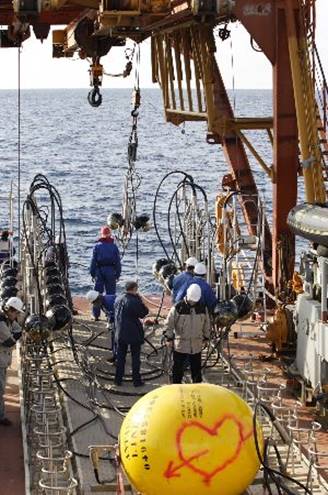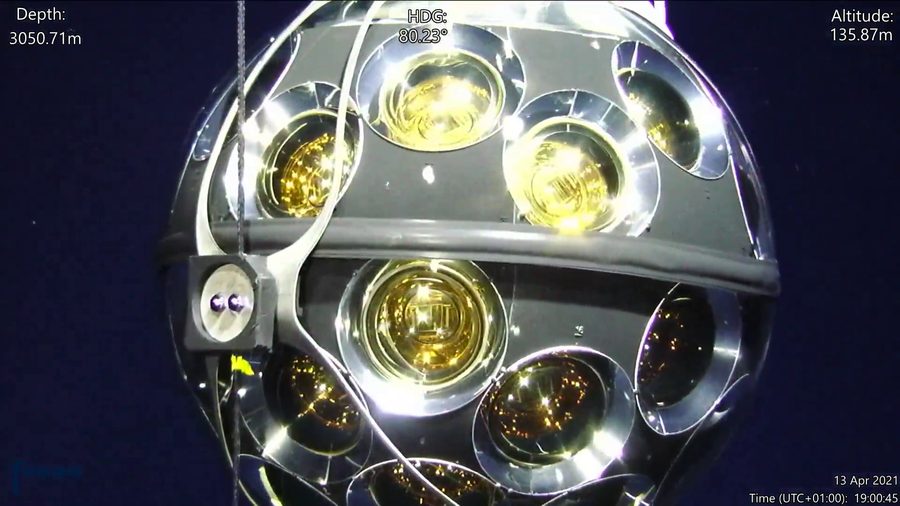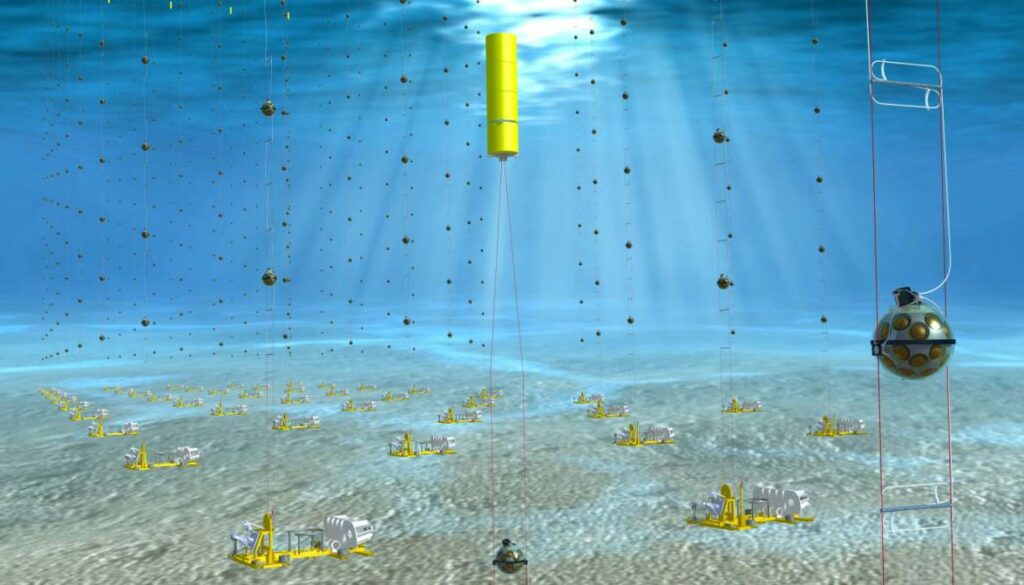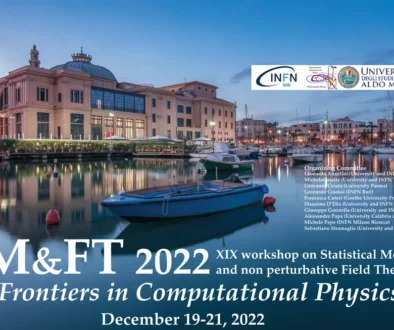ANTARES passes the baton to KM3NeT in the deep sea
The scientific and technological adventure of ANTARES, the first submarine neutrino telescope ever built in the world, has recently come to an end after 16 years of activity.
Installed at a depth of 2500 meters, 40 km off the coast of Toulon in France, ANTARES has produced very important results and demonstrated the validity of the technological solutions, handling over to KM3NeT, the ambitious multisite research project under construction in the Mediterranean, the mission of studying the cosmos by detecting neutrinos.

The deepest marine abysses do not only represent the last frontier in the exploration of our planet but also offer extraordinary opportunities for the study of the cosmos and its fundamental components. This is the scientific motivation of both ANTARES (Astronomy with a Neutrino Telescope and Abyss Environmental RESearch) and KM3NeT (KM3 Neutrino Telescope), two experimental initiatives carried out with the substantial participation of INFN within large international collaborations.
From its position in the Northern Hemisphere, ANTARES has for long years been the most sensitive detector in scanning the southern hemisphere sky, contributing significantly to the new field of investigation of multi-message astronomy and high-energy neutrino astrophysics.

Marco Circella, researcher at the INFN of Bari has been the technical coordinator of ANTARES for 6 years and the Technical Project Manager of KM3NeT for 4.
He comments: “The research group from Bari has made a formidable contribution to both ANTARES and KM3NeT. Let me just say that a third of the submarine electronic modules of ANTARES have been built in our laboratory. We could then add the long-term coordination of the calibration activities of the apparatus and the contributions to data analysis. The challenge for KM3NeT was even greater: to create solutions that allow this giant apparatus to be built in a reasonable time and with such reliability that it will not require maintenance on site.”
Irene Sgura, INFN technologist in Bari with responsibility for coordinating the integration activities of the base modules of the detection lines, explains: “Our group has always been characterized in KM3NeT for its reference role in the design and prototyping of crucial parts of the apparatus, such as the electro-optical interface modules at the bases of the detection lines and the anchoring and installation structures of the lines on the seabed. These developments were instrumental in starting the construction of the apparatus successfully.”
Cosimo Pastore, technologist of the INFN of Bari, is responsible for the construction of the new KM3NeT laboratory, equipped for the integration of the bas modules of the detection lines and for precision mechanical measurements, funded as part of the PACK project (Potenziamento Appulo -Campano of KM3NeT). He comments: “We aim to further extend the activities for KM3NeT in Bari and for this reason in the KM3NeT4RR project, proposed for funding under the PNRR (the National Plan for Recovery and Resilience), we have foreseen the implementation of a new laboratory equipped for the integration of detection lines, to be built in collaboration with the Polytechnic of Bari.”
To an experiment which ends its data taking, such as ANTARES, then correspond the high expectations of a starting experiment such as KM3NeT.
The Mediterranean will thus continue to be a frontier observatory to investigate the secrets of the cosmos.




